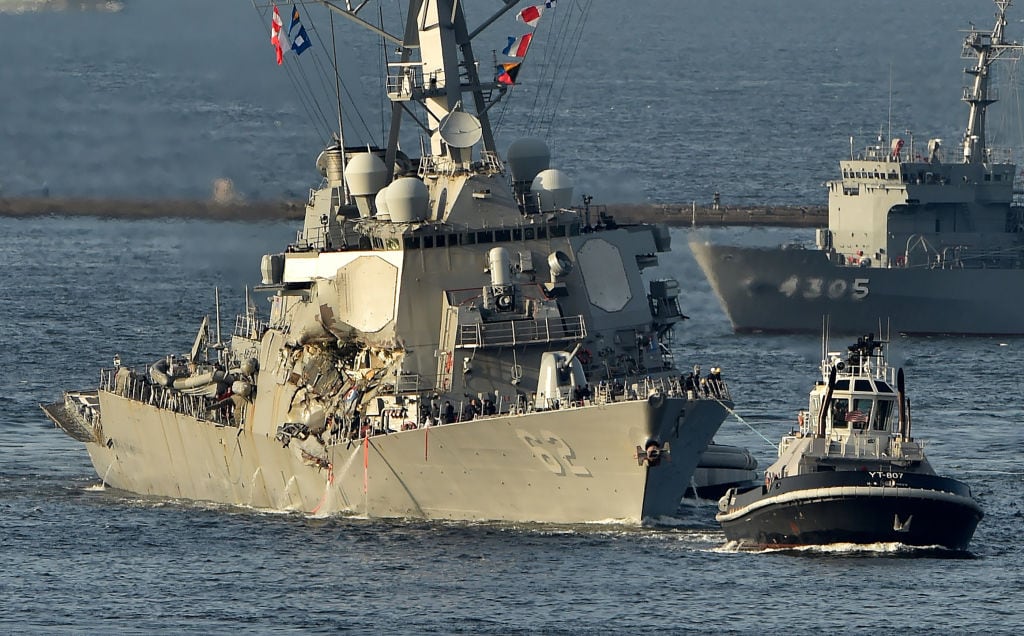WASHINGTON — A study by the U.S. Government Accountability Office on the U.S. Navy has found declining ship conditions and worsening trends in readiness as a result of shortened training periods, increased deployment lengths, and reduced or deferred maintenance for meeting high-operational demands.
The Navy’s plan to grow its fleet by 30 percent is likely to be stifled by the manning, maintenance and training issues. These issues are at least partly blamed on budget cuts, according to the watchdog agency.
GAO pointed to a number of past personnel issues: In May 2015, there had been no dedicated training periods for cruiser and destroyer operational schedules in Japan, resulting in a lack of crew training and certifications. And in June 2017, the GAO revealed that 37 percent of Japan-based cruiser or destroyer personnel warfare certifications had expired, a five-fold increase from the GAO’s May 2015 report.
Furthermore, a May 2016 GAO report found the Navy was struggling to complete maintenance on schedule. According to the report, maintenance overruns on 63 percent of the Navy’s surface ships led to a loss of 6,603 operational days from fiscal 2011 to fiscal 2016. It appeared that extended deployments as a result of budget cuts between 2011 and 2013 had inevitably taken time away from dealing with ship-maintenance issues.
Defense News has reported on the Essex, an amphibious assault ship deployed to Japan in 2012, whose years of deferred maintenance had led to the costliest period of depot maintenance in U.S. naval history. Documentation from the Navy Surface Maintenance Engineering Planning Program said 364,280 Navy labor days had been used on the Essex, compared to the 177,206 labor days originally planned.
In May 2017, the GAO found that naval crew-size reductions had created sailor overwork and safety risks. Despite the service reversing some of the crew-size changes, it was still using a workweek standard that did not reflect sailors’ working hours and in-port workload. The GAO indicated that these elements have contributed to some sailors working 100-hour weeks, and that stationed ships in Japan spent at least 42 more days out at sea than U.S.-based ships.
The GAO study was released after series of significant naval mishaps since January 2017, which resulted in ship damage and the death of 17 sailors. The most recent of these was the collision outside the Strait of Malacca between the U.S. Navy destroyer John S. McCain and an oil tanker three times its size.
RELATED

Chief of Naval Operations Adm. John Richardson ordered an operational pause for all worldwide fleets, with the vice chief of naval operations simultaneously directing a comprehensive review of surface fleet operations. The vice chief indicated that the incidents were not an anomaly.
The Navy has recently issued 20 reprimands to skippers and sailors involved in three major collisions involving the 7th Fleet this year, with most arising from the June 17 collision between the U.S. Navy destroyer Fitzgerald and a container ship, which left seven sailors dead.
The GAO has recommended improved risk assessment for overseas basing, sailor workload and ship crew size; investment in the modernization and efficiency of naval shipyards; and the better attention be given to planning and management for rebuilding fleet readiness.








